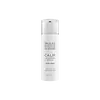What's inside
What's inside
 Key Ingredients
Key Ingredients

 Benefits
Benefits

 Concerns
Concerns

No concerns
 Ingredients Side-by-side
Ingredients Side-by-side

Water
Skin ConditioningGlycerin
HumectantIsostearyl Neopentanoate
EmollientButylene Glycol
HumectantPentylene Glycol
Skin ConditioningPolysorbate 20
EmulsifyingTambourissa Trichophylla Leaf Extract
Skin ConditioningGlyceryl Acrylate/Acrylic Acid Copolymer
HumectantDimethicone
EmollientDimethiconol
EmollientAmmonium Polyacryloyldimethyl Taurate
Emulsion StabilisingDisodium EDTA
Acetyl Dipeptide-1 Cetyl Ester
Skin ConditioningWater
Skin ConditioningGlycerin
HumectantHyaluronic Acid
HumectantBeta-Glucan
Skin ConditioningSea Whip Extract
Skin ConditioningSodium Hyaluronate
HumectantCeramide NP
Skin ConditioningCeramide AP
Skin ConditioningCeramide EOP
Skin ConditioningCholesterol
EmollientGlycyrrhiza Glabra Root Extract
BleachingEpilobium Angustifolium Flower/Leaf/Stem Extract
Skin ConditioningPhytosphingosine
Skin ConditioningSodium Cocoyl Amino Acids
CleansingChrysanthemum Parthenium Flower Extract
Skin ConditioningGlycine Soja Seed Extract
Skin ConditioningUbiquinone
AntioxidantSodium Lauroyl Lactylate
EmulsifyingCaprylic/Capric Triglyceride
MaskingMagnesium Aspartate
Skin ConditioningPotassium Aspartate
Skin ConditioningSarcosine
Skin ConditioningXanthan Gum
EmulsifyingCarbomer
Emulsion StabilisingPolysorbate 20
EmulsifyingPEG/PPG-14/4 Dimethicone
EmulsifyingDisodium EDTA
Ethylhexylglycerin
Skin ConditioningPhenoxyethanol
PreservativeWater, Glycerin, Hyaluronic Acid, Beta-Glucan, Sea Whip Extract, Sodium Hyaluronate, Ceramide NP, Ceramide AP, Ceramide EOP, Cholesterol, Glycyrrhiza Glabra Root Extract, Epilobium Angustifolium Flower/Leaf/Stem Extract, Phytosphingosine, Sodium Cocoyl Amino Acids, Chrysanthemum Parthenium Flower Extract, Glycine Soja Seed Extract, Ubiquinone, Sodium Lauroyl Lactylate, Caprylic/Capric Triglyceride, Magnesium Aspartate, Potassium Aspartate, Sarcosine, Xanthan Gum, Carbomer, Polysorbate 20, PEG/PPG-14/4 Dimethicone, Disodium EDTA, Ethylhexylglycerin, Phenoxyethanol
 Reviews
Reviews

Ingredients Explained
These ingredients are found in both products.
Ingredients higher up in an ingredient list are typically present in a larger amount.
Disodium EDTA plays a role in making products more stable by aiding other preservatives.
It is a chelating agent, meaning it neutralizes metal ions that may be found in a product.
Disodium EDTA is a salt of edetic acid and is found to be safe in cosmetic ingredients.
Learn more about Disodium EDTAGlycerin is already naturally found in your skin. It helps moisturize and protect your skin.
A study from 2016 found glycerin to be more effective as a humectant than AHAs and hyaluronic acid.
As a humectant, it helps the skin stay hydrated by pulling moisture to your skin. The low molecular weight of glycerin allows it to pull moisture into the deeper layers of your skin.
Hydrated skin improves your skin barrier; Your skin barrier helps protect against irritants and bacteria.
Glycerin has also been found to have antimicrobial and antiviral properties. Due to these properties, glycerin is often used in wound and burn treatments.
In cosmetics, glycerin is usually derived from plants such as soybean or palm. However, it can also be sourced from animals, such as tallow or animal fat.
This ingredient is organic, colorless, odorless, and non-toxic.
Glycerin is the name for this ingredient in American English. British English uses Glycerol/Glycerine.
Learn more about GlycerinPolysorbate 20 is made by combining ethoxylation of sorbitan, ethylene oxide, and lauric acid. It is a mild cleansing agent, surfactant, and emulsifier.
As a surfactant, it helps collect dirt and oils for washing. Emulsifiers prevent oils and water from separating.
Polysorbate 20 also adds scent to a product. Since it is made using sorbitol, it has a sweet scent. Sorbitol can also be found in fruits such as apples and peaches.
The lauric acid used to create Polysorbate 20 is often derived from coconuts.
Polysorbate 20 may not be fungal acne safe.
Learn more about Polysorbate 20Water. It's the most common cosmetic ingredient of all. You'll usually see it at the top of ingredient lists, meaning that it makes up the largest part of the product.
So why is it so popular? Water most often acts as a solvent - this means that it helps dissolve other ingredients into the formulation.
You'll also recognize water as that liquid we all need to stay alive. If you see this, drink a glass of water. Stay hydrated!
Learn more about Water